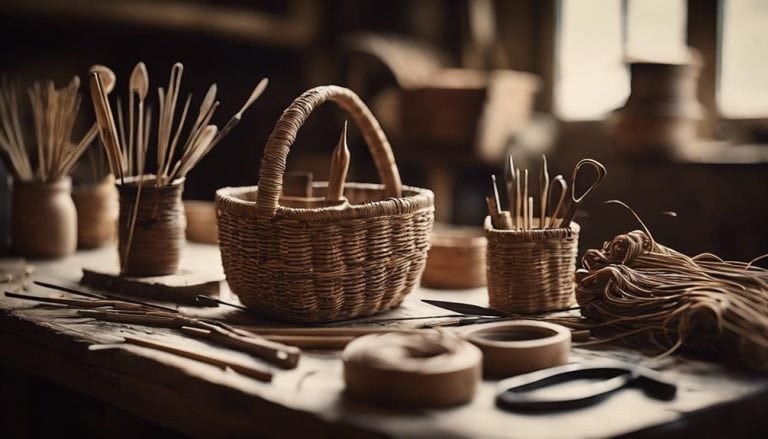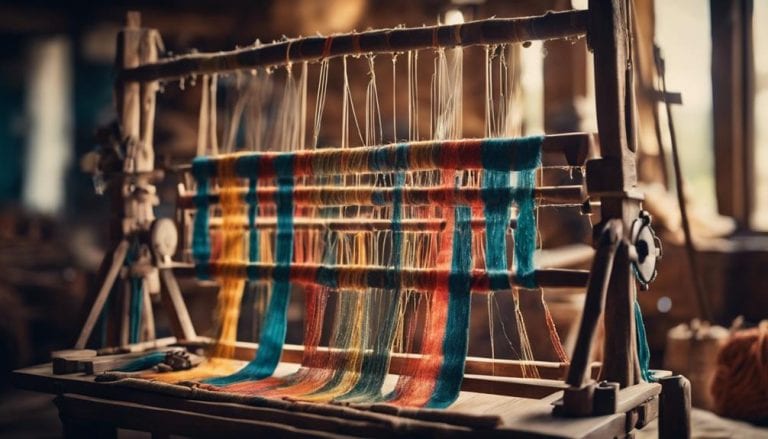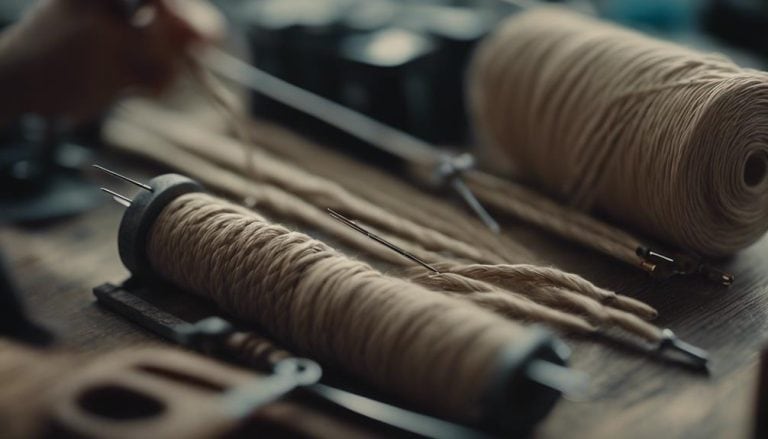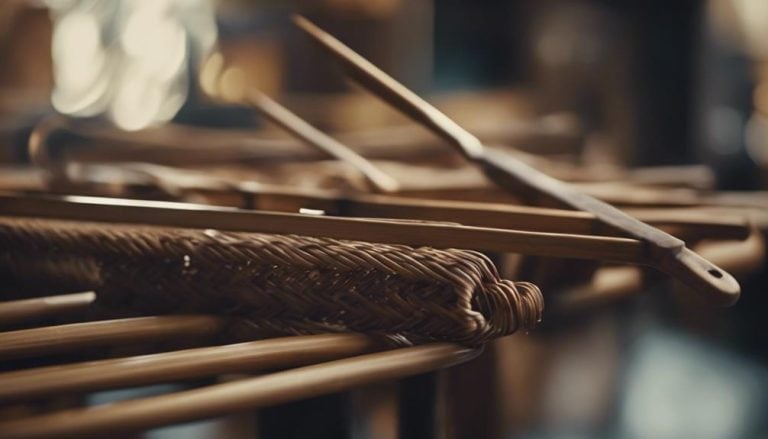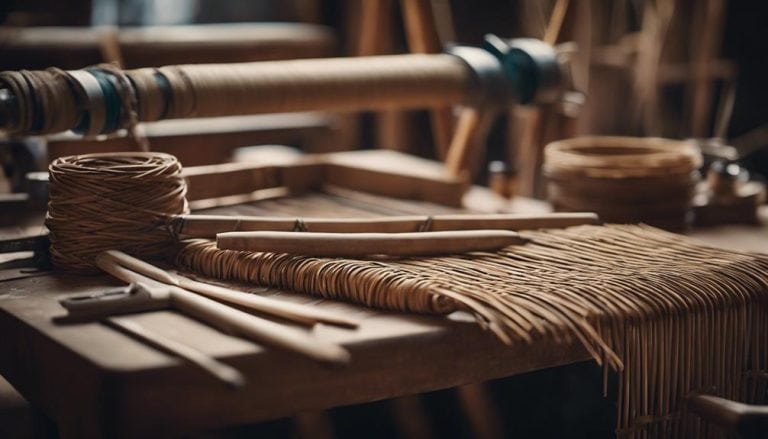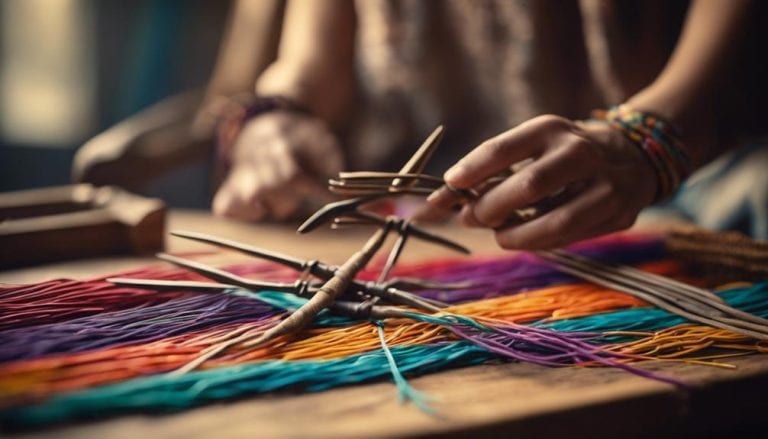Essential Rattan Cane Weaving Equipment
Back in the day, rattan cane weaving was an art that required precise tools to master. As I explore the world of essential equipment for rattan cane weaving, I uncover not just the basics but also the specialized tools that elevate the craft to new heights. From the humble knife to intricate gauges, each tool plays a pivotal role in creating masterpieces. But what about the lesser-known tools that can truly set your weaving apart? Let's uncover the secrets behind these essential rattan cane weaving tools that can transform your creations into works of art.
Key Takeaways
- Different types of rattan cane cater to various weaving needs and styles.
- Essential weaving tools like knives and chisels are crucial for precise and durable designs.
- Specialized weaving equipment such as cane splitters and reed cutters enhance efficiency and quality.
- Maintenance and advanced techniques are vital for prolonging tool lifespan and mastering intricate weaving methods.
Types of Rattan Cane
When exploring the world of rattan cane weaving equipment, it is crucial to understand the distinct characteristics of various types of rattan cane available. Flat rattan, round rattan, and core rattan each offer unique textures and flexibility for specific weaving projects. Flat rattan cane, with its wide and smooth surface, is ideal for creating intricate basket designs and adding accents to furniture pieces. This type of cane lends itself well to weaving techniques that require a flat and broad material for a more structured finish. On the other hand, round rattan cane, with its cylindrical shape, is perfect for crafting rounded shapes and structures in basket weaving. It is commonly used in creating the curves and edges of baskets, giving them a smooth and uniform appearance. Lastly, core rattan is essential for providing the framework and structure needed for sturdy baskets and furniture pieces. Its strength and durability make it a foundational element in more complex weaving projects requiring a solid base. Each type of rattan cane offers a unique set of applications and textures, catering to a wide range of weaving techniques and tutorials.
Essential Weaving Tools
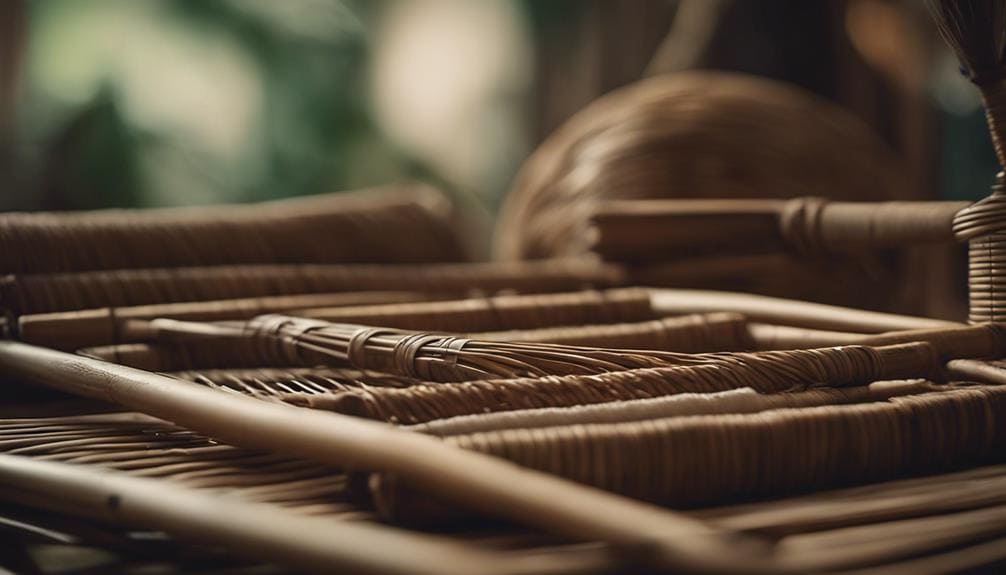
In the realm of rattan cane weaving, precision is paramount, and the use of essential tools such as knives, gauges, chisels, and awls is indispensable for achieving intricate and professional results. These tools play a crucial role in mastering various weaving techniques and bringing creative projects to life. When working on basket weaving or chair caning projects, the sharp blades of these tools enable artisans to create beautiful and durable woven designs with finesse.
To ensure continued success in rattan cane weaving, it is vital to invest in quality tools and maintain them properly. Regular tool maintenance not only prolongs their lifespan but also guarantees consistent performance. Keeping the blades sharp and handles clean is essential for achieving precise weaving results. Additionally, practicing safety tips, such as using protective gear like gloves and goggles, ensures that weaving projects are not only creatively fulfilling but also safe and enjoyable experiences. By incorporating these practices into your weaving endeavors, you set yourself up for success in the world of rattan cane weaving.
Cane Webbing Stretcher
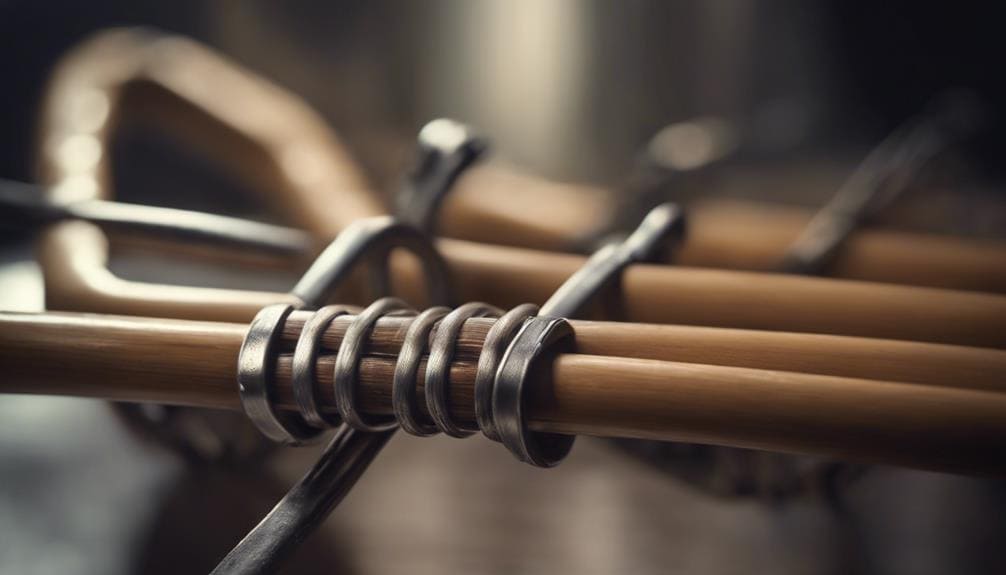
Using a cane webbing stretcher in rattan cane weaving projects ensures precise and professional results by securely stretching and applying cane webbing onto chair frames with even tension. It is crucial to maintain your stretcher for optimal performance. Regularly check for any signs of wear and tear, and clean it after each use to prolong its lifespan. When not in use, store it in a dry place to prevent any potential damage.
For those looking for stretcher alternatives or DIY options, there are some creative solutions available. One option is to use adjustable clamps or straps to secure the cane webbing onto the chair frame. While this method may require more manual effort and precision, it can still yield satisfactory results. Another alternative is using a wooden frame with nails strategically placed to hold the cane webbing taut while weaving. This DIY approach can be cost-effective and suitable for smaller projects or occasional use. However, for consistent and professional outcomes, investing in a quality cane webbing stretcher is highly recommended.
Cane Splitter
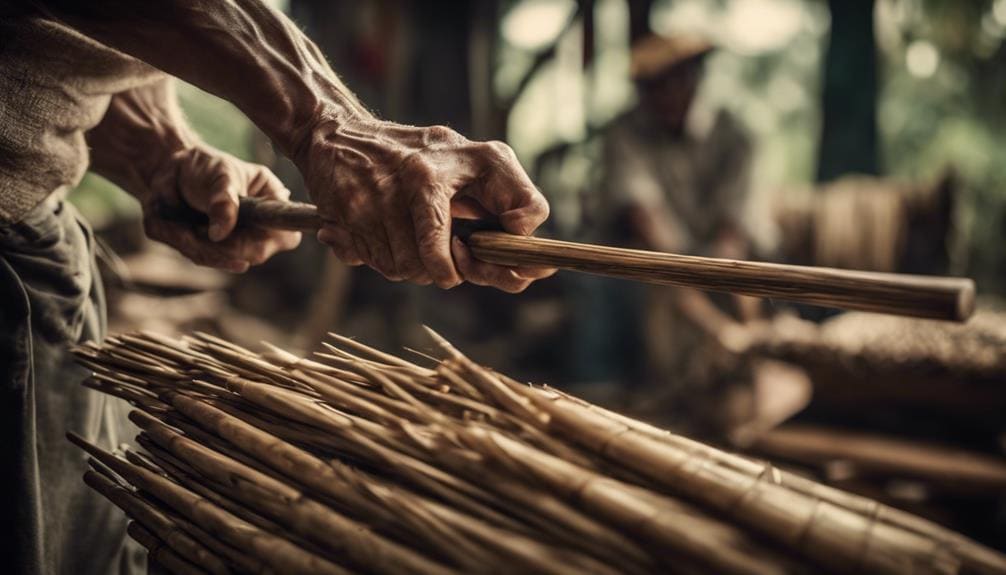
To ensure precise and efficient preparation of cane strips for weaving projects, a cane splitter is an indispensable tool in the rattan cane weaving process. The cane splitter plays a crucial role in cane preparation by using a splitting technique that results in uniform strips of the desired width, enhancing weaving precision. This tool ensures that cane strips are consistent in size, leading to a more polished final product with a professional touch. By utilizing a cane splitter, weavers can save time and effort that would have been spent manually splitting cane, thus improving weaving efficiency. This equipment is a game-changer for artisans looking to streamline their workflow and elevate the quality of their cane weaving projects. Embrace the liberation that comes with mastering the art of cane preparation using a cane splitter.
| Benefits of Cane Splitter | ||
|---|---|---|
| Enhances Weaving Precision | Saves Time | Improves Efficiency |
Reed Cutter
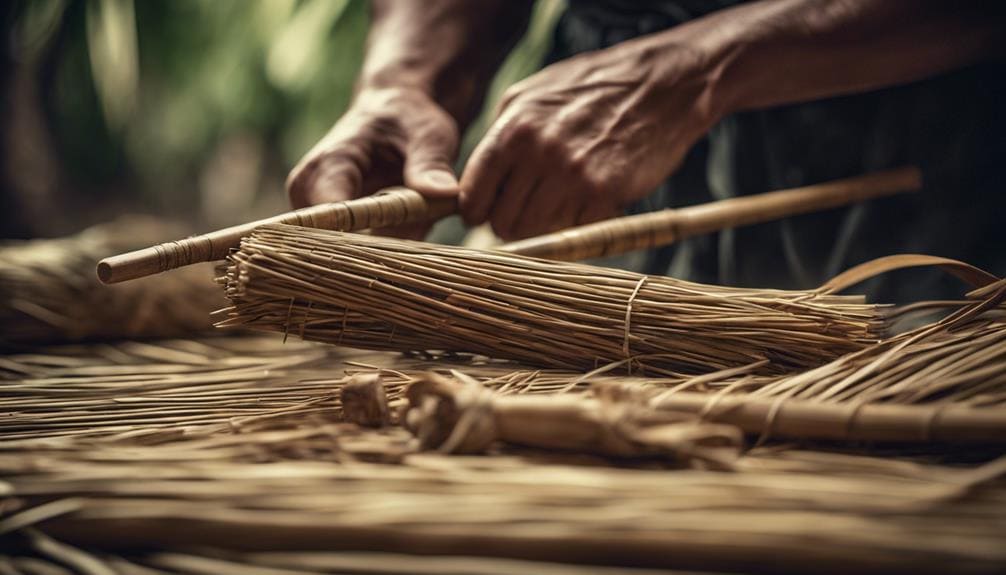
With a sharp reed cutter in hand, precision and finesse are effortlessly achieved in shaping rattan cane for intricate basket weaving projects. Reed cutters are indispensable tools that require proper maintenance to ensure optimal performance. Regular sharpening of the blade is essential for clean and neat cuts, enhancing the overall appearance of the woven baskets. When choosing a reed cutter, consider the size and design that best suits your weaving projects. Investing in a high-quality reed cutter is paramount for achieving professional results in rattan cane weaving.
When comparing reed cutters, look for durable materials that can withstand the rigors of frequent use. Ergonomic handles and adjustable blades are features to prioritize for comfort and versatility. Understanding different cutting techniques can help improve efficiency and precision in shaping rattan cane. Whether you are a seasoned weaver or just starting, a reliable reed cutter is a valuable asset in your weaving toolkit.
Awl for Weaving
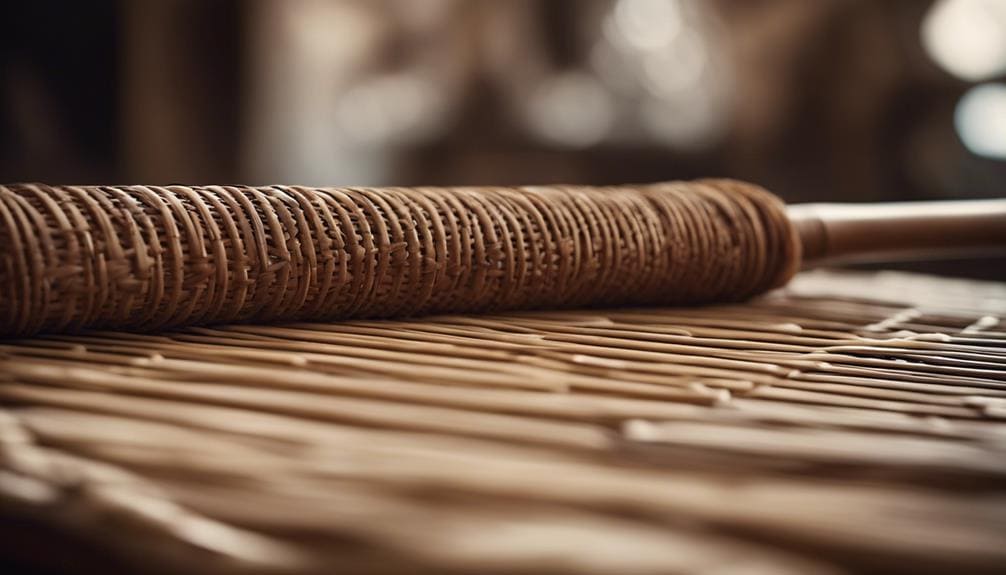
Crafting intricate patterns in rattan cane weaving requires precise tools like the awl, a pointed instrument essential for creating holes in the cane to facilitate weaving. The awl is a versatile tool that can significantly impact the weaving process, allowing for creativity and precision in each project. Here are some key points to consider when working with an awl for weaving:
- Awl techniques: Mastering different techniques such as piercing, twisting, and turning with the awl can help achieve unique weaving patterns.
- Weaving patterns: Experimenting with the awl can lead to the creation of diverse weaving patterns, adding character and depth to the final piece.
- Awl maintenance: Keeping the awl sharp and properly maintained is crucial for efficient and clean hole-making during weaving.
- Creative weaving ideas: Thinking outside the box and exploring unconventional ways to use the awl can inspire innovative weaving designs.
- Quality tools matter: Investing in high-quality awls can enhance the overall weaving experience, ensuring smoother and more precise weaving outcomes.
Must-Have Weaving Equipment
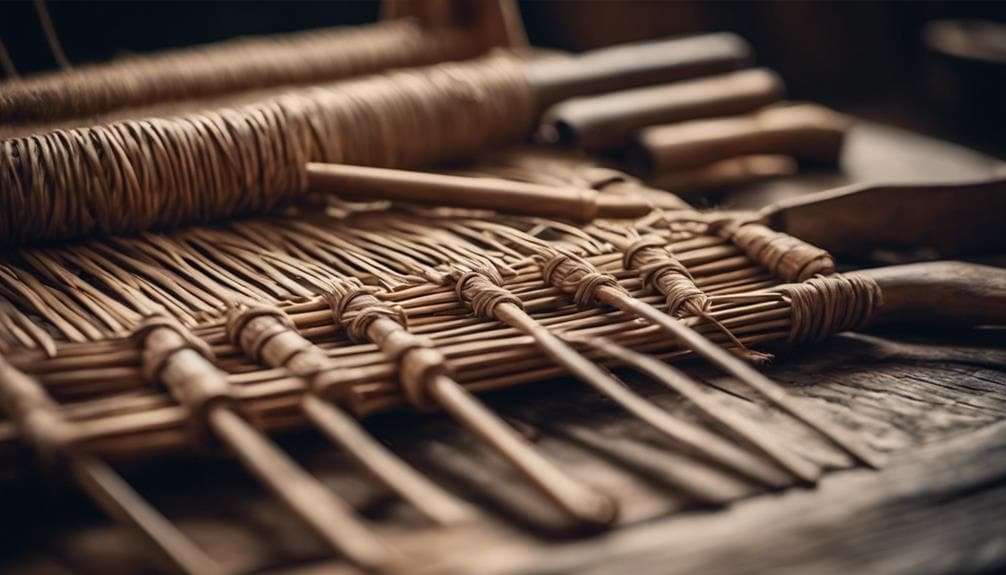
Among the essential tools for rattan cane weaving, acquiring top-notch knives, gauges, chisels, and awls is paramount for achieving intricate and durable basket designs. These tools are indispensable for mastering weaving techniques and adding decorative elements to your creations. Sharp blades in the weaving tools ensure precise cuts, enabling detailed and artistic patterns in rattan cane projects. Quality weaving equipment not only enhances the weaving process but also plays a vital role in the durability and beauty of the final product. To maintain these tools in optimal condition, regular sharpening and proper storage solutions are essential. Investing in durable and high-quality cane tools is a must for both artisans and hobbyists engaged in basket weaving, as it significantly impacts the outcome of their work. By understanding the significance of these must-have weaving tools, artisans can elevate their craft and create stunning, functional rattan cane products.
Frequently Asked Questions
What Is the Difference Between Rattan and Caning?
Rattan, a natural vine material, differs from caning, a weaving technique using rattan cane. Rattan provides durability and flexibility, while caning involves weaving rattan cane through frames for stylish seating. Cane furniture trends highlight the beauty of rattan.
How Long to Soak Rattan Before Weaving?
I soak rattan for at least 12 hours before weaving to ensure flexibility. Longer times might be needed for thicker pieces. Soaking allows for intricate weaving patterns. Properly soaked rattan makes weaving easier and prevents breakage.
How Do You Prepare Rattan for Weaving?
To prepare rattan for weaving, soak it in warm water, trim the ends with a sharp knife, straighten any kinks, and ensure it's dry. Proper preparation leads to smooth weaving. For maintenance, store cane in a dry place.
What Is the Difference Between Rattan and Willow?
Rattan, known for strength and durability, contrasts willow's flexibility in weaving. Rattan offers a glossy finish and smooth surface, sourced from Southeast Asia. Willow, with a rougher texture, is common in Europe and North America for basketry.
Conclusion
As I put away my essential rattan cane weaving equipment, I feel like a painter cleaning their brushes after a masterpiece. Each tool played a crucial role in bringing my vision to life, creating intricate patterns and durable designs. Just like a weaver threads together strands of cane, these tools weave together craftsmanship and artistry. Investing in quality equipment is like investing in the foundation of a beautiful creation.


